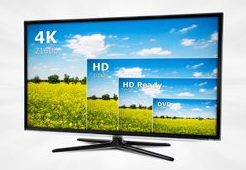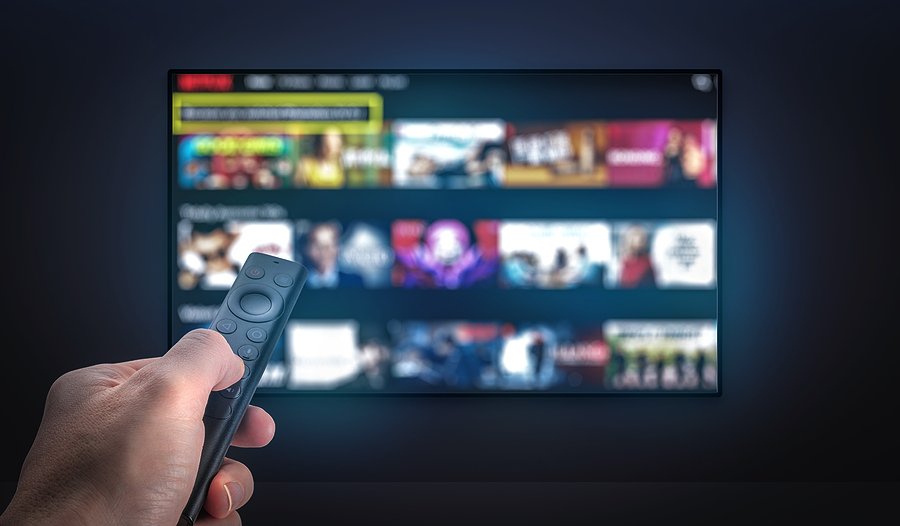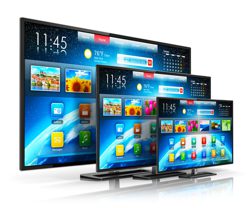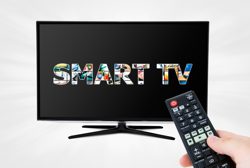 In essence the idea of buying a television seems like a simple one. They’ve been around us all our lives; we know what they look like and what they do. When you get down to the nitty gritty of it, however, there’s far more to it than you might think. What size should you buy? Should you look to get a SMART TV? Do pixels matter?
In essence the idea of buying a television seems like a simple one. They’ve been around us all our lives; we know what they look like and what they do. When you get down to the nitty gritty of it, however, there’s far more to it than you might think. What size should you buy? Should you look to get a SMART TV? Do pixels matter?
Shops With Television Offers
Television Buying Guide

Here we’ll be guiding you through all of the main things you should be looking for when it comes to the purchase of your new television. According to the Nielsen Index, the average American over the age of 2 watches 34 hours of television a week. The least we can do is ensure you spend those hours watching it on the best device that you can find.
Size
 The reality is that you’ve got to search long and hard before you can find a TV nowadays that isn’t flat screen. In fact, the screens just seem to be getting flatter. So, the decision you need to make isn’t about whether your television will be thin or fat, but how big it will be in relation to the room you’ll be putting it into.
The reality is that you’ve got to search long and hard before you can find a TV nowadays that isn’t flat screen. In fact, the screens just seem to be getting flatter. So, the decision you need to make isn’t about whether your television will be thin or fat, but how big it will be in relation to the room you’ll be putting it into.
Generally speaking most TVs nowadays have a widescreen viewing ratio, so whatever type of screen you get, here’s a rough guide to screen size compared to distance.
- Up to 22” – 4-5 ft
- 24 to 32” – 6-9 ft
- 39 to 46” – 10 – 11 ft
- 47 to 50” – 12 ft
- 55 to 60” – 13 ft
- 65 to 75” – at least 14 ft
- Over 75” – at least 20 ft
You can see, that bigger isn’t necessarily always better. The best thing to do is figure out where about in the room you’d like your television, decide where about you’ll be sitting, and measure the distance. Once you’ve done that you’ll know roughly what size television you should be looking for.
Picture Quality
 HD. HD-Ready. 4K. The various acronyms that apply to the picture quality in televisions in this day and age make for complicated reading if you’re not sure what they mean. Here’s a quick breakdown.
HD. HD-Ready. 4K. The various acronyms that apply to the picture quality in televisions in this day and age make for complicated reading if you’re not sure what they mean. Here’s a quick breakdown.
HD-Ready
This means that your television has the capacity to show high definition signals, but doesn’t have an HD tuner built into the set. In order to watch something in HD you’ll have to supply your own source. HD-Ready sets tend to supply 720 lines of vertical resolution. Not amazing, but not terrible if you’re looking for a TV on a budget.
Full HD
Typically, full HD televisions offer four times the quality of analogue and digital broadcasts. Some televisions offer what’s called “upscaling”, which is essentially giving a standard picture an HD makeover. This isn’t as good as native HD as supplied by something like a Blu-ray player or modern games console, but it isn’t half bad. Full HD tends to mean 1080p, offering 1080 lines of resolution, making pictures crisp and clear.
4K
4K is also known as Ultra HD, so you can guess from that what it offers. 4K sets have a resolution that is made-up of 8.3 million pixels – that’s 4 times the amount of pixels in a full HD set. That means the screen quality is incredibly clear, even if you get quite close to the screen. 4K is the future of television, but it isn’t yet being fully embraced by those who broadcast TV shows. In the coming months & years everything will be filmed in 4K, but sports broadcasting will especially benefit.
Screen Type
There are now 3 different types of television screens. LED, OLED and 4K.
LED
LED televisions feature hundreds of small LEDs, or Light Emitting Diodes, that backlight displays and produce a greater contrast. Blacks appear blacker, which leads to a sharper image. This in turn means that the TVs can be slimmer and tend to use less power. Nowadays LED TVs are becoming less common as OLED and 4K televisions offer more quality.
OLED
OLED stands for Organic Light-Emitting Diode. These are small, organic cells that create their own light source. This stops the light from spreading into different areas – as can happen with LED sets – and so provides a smoother picture. As OLED sets don’t need a backlight they can be even thinner than LED sets, with some screens being as thin as an inch.
4K
4k as discussed in the ‘Picture Quality’ section of the buying guide, this television offers unrivalled picture quality and superb detail. The images on 4K sets are created from 8.3 million pixels, which is 4 times the amount in a full HD set.
Is It SMART?
 SMART televisions are ones that you can connect to the internet in order to seamlessly connect to a whole host of online content. From YouTube to Netflix, more and more people are getting their televisual kicks through an online medium. Without the use of a computer a SMART television lets you access these applications directly, simply by using your remote control.
SMART televisions are ones that you can connect to the internet in order to seamlessly connect to a whole host of online content. From YouTube to Netflix, more and more people are getting their televisual kicks through an online medium. Without the use of a computer a SMART television lets you access these applications directly, simply by using your remote control.
As the use of DLNA, or Digital Living Network Alliance, becomes more prolific, you will be able to do more and more through you television. From sharing the photos and videos you have saved on your phone to playing the latest music you’ve downloaded, SMART televisions are soon going to dominate the way we show people the content we have across our devices.
To 3D or Not to 3D
Some people consider 3D to be a passing phase that they could do without. Others find it an immersive way to watch television. Whatever your personal thoughts on the matter, it’s something you should at least consider when looking at purchasing a new set.
There are 3 types of 3D television available: Active, Passive and Glasses-Free. Active 3D uses heavy, battery powered 3D glasses. This is because the screen sends a different signal to each eye that the glasses then decode. The glasses are not only quite heavy to wear, they are also expensive to replace or buy extras.
Passive 3D block different types of light from each eye, which simply creates the illusion of depth. If you’ve ever been to the cinema to watch a 3D film then you’ll have seen it in passive form. This means that the glasses are cheaper and much easier to find than with Active 3D.
Glasses-Free 3D is exactly what it seems – 3D you can view without having to wear special glasses. The television still sends different images to each eye, but a screen in front of the television itself does the job that is taken care of by the glasses in the other forms of 3D television.
Most 3D televisions also offer the ability to give 2D images a 3D effect. This isn’t as good as native 3D, but can offer additional depth to the image. This can be especially useful when watching sport, such as golf or football.
How Does It Sound?
The development of LED and OLED televisions has resulted in thinner and thinner screens. But whilst picture quality has been improving, sound quality has been going slightly backwards.
Thinner televisions means the built-in speakers are also getting smaller, and that is resulting in a more tinny and disappointing sound. The built-in sound will be enough if you’re not overly fussy, but if you want a more immersive experience then you should really consider a sound bar or comprehensive sound system.
Installation Information
 Definitely not the most important thing to think about when buying a new television, it is nevertheless quite a tricky process to install a new TV. Whether you’re looking to add a sound system, wall-mount the set or connect all of the cables to various computer systems, make sure you know how much help you’re going to get when you buy your new television. If you think you’re going to need it, see what you get as standard before you hire someone to help you.
Definitely not the most important thing to think about when buying a new television, it is nevertheless quite a tricky process to install a new TV. Whether you’re looking to add a sound system, wall-mount the set or connect all of the cables to various computer systems, make sure you know how much help you’re going to get when you buy your new television. If you think you’re going to need it, see what you get as standard before you hire someone to help you.
Anything Else to Think About?
Are you going to wall-mount your set? Or will you be putting it on a stand? Do you have several members of the family who will want to be watching it when you turn on the 3D functionality?
Whether you need a wall bracket or a TV stand, 5 pairs of 3D glasses or additional cables to link up your games console and Blu-ray player, make sure you investigate what comes as standard inside the box and what you’ll need to purchase in addition to the television itself.







